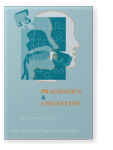Vol. 1:1 (1993) ► pp.51–69
Subordination and information distribution in oral and written narratives
The ways in which given and new information are distributed, and the functions associated with the distribution, are examined here in terms of information content of relative and adverbial clauses in oral and written narratives. The conventional view that subordinate clauses tend to code given rather than new information is shown to be inadequate. Moreover, a comparison of oral and written narratives of the same events reveals both extensive differences in the two modalities, and at the same time striking similarities in terms of the information distribution within relative clauses. Relative clauses are found to be far more frequent in oral narratives than in their written analogues. However, when the differences are examined in terms of the relative frequencies of given and new relative clauses, the oral narratives are shown to have far more given relative clauses than the written versions, whereas the frequencies for the new relative clauses is virtually identical in the two modalities. This result is attributed to memory constraints.
Cited by
Cited by 5 other publications
This list is based on CrossRef data as of 8 april 2024. Please note that it may not be complete. Sources presented here have been supplied by the respective publishers. Any errors therein should be reported to them.
